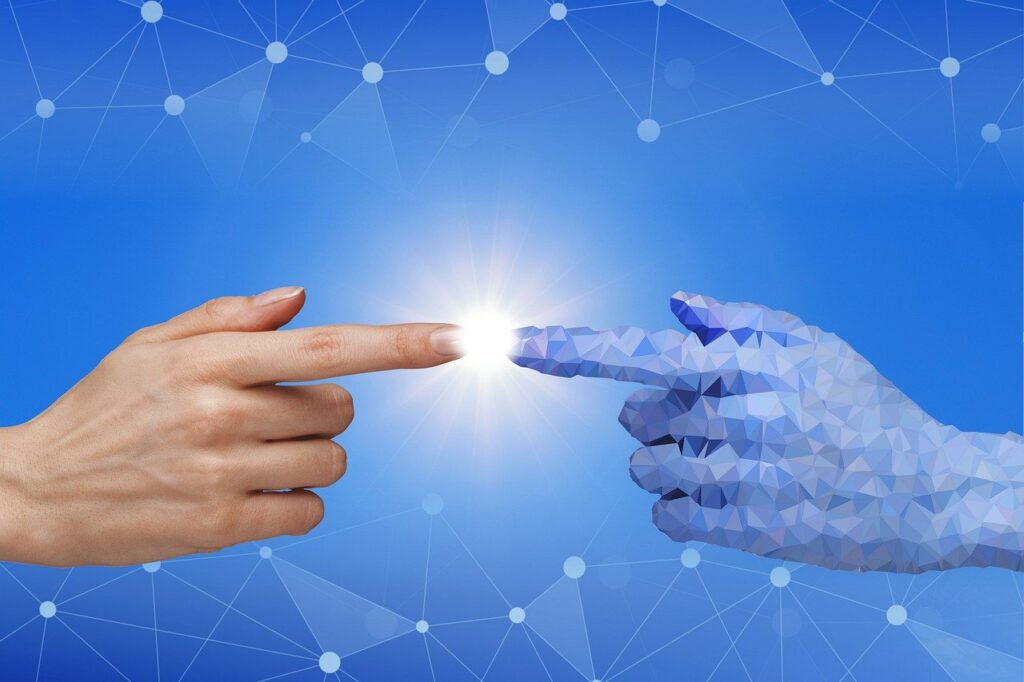I’m sure by now we’ve all heard something or other about Generative AI (artificial intelligence). Be it image manipulation, blog-writing (not this one!), code amendments and testing, content creation, or even cheating at homework, AI is taking the world by storm and showing no signs of slowing down. With viable applications in almost any industry you can think of, the AI revolution is here.
AI and Productivity
AI tools have opened the door to completing complex tasks quickly, by less technical employees and creators. They can offer a starting point for writers, allowing them to focus on more critical aspects such as creativity, strategy, and revision. In software development, AI reduces repetitive coding tasks, allowing developers to focus on complex problem-solving rather than mundane tasks. AI can even teach and train, correcting your work to achieve results in a fraction of the time.
Can’t find the error in your code? AI is a great place to start! I personally have adopted AI into my day-to-day professional life, especially with Chat-GPT. It helps me identify errors in queries, helps re-write communications to suit the intended audience, and sometimes, gives me a better answer to a technical fault than Google!
More Harm Than Good?
But, it’s not all bells and whistles where generative AI is concerned. Fundamentally, where does all the information generative AI tools eat up actually end up? I’m not sure we’ll ever know for certain. That’s why it’s incredibly important to never input sensitive or personally identifiable information into generative AI. Not only that, for all the good AI can bring, it’s results are never guaranteed to be accurate.
While it helps, I can’t count the number of times it’s taken five attempts to get the answer I’m looking for. It rarely gets coding right first time, if what you need is anything above beginner level. It is crucial to always sense-check the results AI generates, and to never run AI generated code you do not understand. It can be seriously dangerous, take it from me!
Another consideration for generative AI is job displacement. We have all seen humans replaced by technology in one way or another. Amazon’s warehouses, self-checkouts in supermarkets, even in self-help menu systems when calling the bank. With the rise of AI, these fears are amplified exponentially. AI allows repetitive tasks to be completed so quickly, and lowers the skill threshold for tasks so much, that job displacement is a real concern. Although, as Jensen Huang (CEO of the industry-leader in AI chips, Nvidia) says “AI won’t take your job, the person who uses AI will take your job.” Now is the time to embrace it, if you ask me!
The Future of Generative AI
For all the fears, the future of generative AI is bright, and promising. As AI models become more sophisticated, so do the potential applications, allowing for huge technological advancements in systems and engineering. From steering rockets, to automating that complex invoicing run you put yourself through every month, AI could be life-changing on a global scale. It could drive our everyday lives, completing the mundane, repetitive tasks, both at work and at home. Can you imagine a world where AI allows us enough freedom to focus only on what we enjoy, and not on the tasks that bore us? I can, and I can’t wait for it!
In conclusion
Generative AI is transforming content creation and software development in unprecedented ways, providing both opportunities and challenges. While it enhances productivity, accessibility, and speed, it also reveals risks related to quality, ethics, and job displacement. AI isn’t going anywhere, and the future of generative AI will require a balance between technological advancements and ethical considerations to ensure a positive and responsible impact on society.









